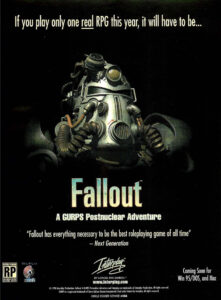
This early advertisement for Fallout makes a not-so-subtle dig at gaming’s then-current flavor of the month, the highly streamlined — or, in the view of some, dumbed-down — CRPG Diablo.
Those of you who are regular readers of these histories will surely have noticed the relative dearth of coverage of the CRPG genre over the last few years. This isn’t reflective of any big shift in editorial policy; it’s rather reflective of the fortunes of the genre itself, which were not particularly good in the mid-1990s. Let’s take a moment to review how the CRPG found itself on the outside looking in while the rest of the games industry was growing by leaps and bounds.
The early efforts of pioneers like Jon Freeman, Richard Garriott, Robert Woodhead, and Andrew Greenberg culminated in the CRPG’s commercial breakout in 1985. That year Ultima IV and The Bard’s Tale, conveying two very different but equally tempting visions of what the genre could do and be, both became major hits. CRPGs continued on a steady upward trajectory thereafter, with ever more of them being released. Another watershed was reached in 1988, when Pool of Radiance, the first full-fledged, licensed implementation of the Dungeons & Dragons tabletop rules on computers, sold over 250,000 copies to become the most successful game ever published by SSI, heretofore a modest purveyor of computerized wargames. More CRPGs came thick and fast after that.
By 1992, however, CRPGs were beginning to seem like too much of a single, fairly homogeneous thing. Dungeons & Dragons, Tunnels & Trolls, Might and Magic, The Magic Candle… even when the games were made with passion and love, which for the most part they were, they were becoming a bit difficult for even the cognoscenti to distinguish from one another. With their intense focus on statistics and their usually turn-based combat systems, these games seemed increasingly out of touch with the broader trends in gaming, whether one spoke of the flashy multimedia presentation of interactive movies or the visceral action of DOOM and its contemporaries.
The genre tried to adapt to the changing times by streamlining itself, replacing turn-based with real-time combat systems and making more use of multimedia. A couple of these “CRPG Lites” met with some success; Westwood’s Lands of Lore and Interplay’s Stonekeep both managed to sell more copies in the expanded marketplace of the mid-1990s than Pool of Radiance had at the end of the previous decade. But they were the exceptions that proved the rule. CRPGs stopped appearing regularly on the bestseller charts. As a result, most American publishers washed their hands of the genre entirely, leaving it to European importers and boutique diehards like SSI, who continued to flood the market with ever more underwhelming Dungeons & Dragons product until TSR, the maker of the tabletop game, finally took their license to do so away.
And then, just as 1996 was turning into 1997, along came a little game called Diablo, from Blizzard Entertainment. It did streamlining right; it took the traditional attributes of the CRPG, simplified them enough to make them intuitively understandable without ever cracking open a manual, polished the living hell out of every facet of their presentation and implementation, and then added the secret sauce of procedural generation to yield a game that was, in theory at least, infinitely replayable. In fact, Diablo was so streamlined that gamers have continued to argue to this day over whether it ought to qualify as a “real” CRPG at all. Yet its fast-paced accessibility and addictive nature made it a mainstream hit on a scale which no earlier CRPG could touch. In thus demonstrating to the world that there was some life yet in the old paradigm of exploring dungeons, killing monsters, collecting loot, and leveling up your character, it provided the first glimmer of a CRPG Renaissance that was lurking just over the horizon.
At the time, though, there was ample reason to wonder whether the Diablo model was all that the genre could aspire to in the future. What about the more conceptually ambitious CRPGs of yore, the ones that had striven to be about more than just loot and stats, that had often attempted — to be sure, sometimes clumsily — to present real interactive stories, set in compelling, internally consistent worlds? Those whom Diablo left still wishing for those things had their wish granted ten months later, by a more full-faceted herald of the CRPG Renaissance that went by the name of Fallout.
In 1990, Tim Cain was a graduate student at the University of California, Irvine. He was studying computer science, but his first love had long been games, both on the tabletop and on the computer. Late that year, his father passed away while still in his fifties, prompting the young man to properly confront life’s brevity and unpredictability for the first time. Determined to rededicate his own life to that which he loved most, he bought himself the latest issue of Computer Gaming World and sent his résumé out to every corporate address he could find within its pages. He wound up being called in to an interview at and then receiving an offer from Interplay Productions, which happened to be located conveniently nearby in Southern California. His first project as a programmer for Interplay was The Bard’s Tale Construction Set; his second was Rags to Riches: The Financial Market Simulation. After finishing the latter, Cain worked mainly on installers and other unglamorous utilities, whilst tinkering with game engines of his own devising, waiting for a chance to make his mark as not just a programmer but a creative voice. In early 1994, when Interplay’s founder and CEO Brian Fargo said that he was interested in licensing a tabletop RPG property for adaption into a computer game, Cain thought he saw his chance.
An avid tabletop role-player since childhood, Cain had in recent years become a devotee of a system called GURPS, owned by the Austin, Texas-based outfit Steve Jackson Games.[1]This American Steve Jackson is not the same man as the British Steve Jackson, the co-founder of Games Workshop. GURPS — the acronym stands for “Generic Universal Role-Playing System” — was a prominent member of a new guard of tabletop RPGs that aimed to be more flexible and player-empowering than Dungeons & Dragons, that hoary old standard bearer of the field. Instead of relying upon rigid class archetypes during character creation, it let players select from a menu of skills, advantages, and, most interestingly, disadvantages that made each character completely unique. For example, a disadvantage might be something as simple as an inability to tell even the smallest white lie — a disconcertingly hard quality to live with, whether in our world or any of its more fantastic counterparts that were to be found in GURPS source books. Speaking of which: you could use the basic GURPS rules for Dungeons & Dragons-style fantasy, but you could also use them for space opera, cyberpunk, Westerns, horror, mysteries… you name it, as long as you either bought the right supplements from Steve Jackson or were willing to put in the effort to roll your own rules extensions.
Tim Cain loved GURPS so much that he programmed several digital utilities to make the job of a GURPS game master easier and uploaded them to the Internet. He brought his obsession with him to Interplay and spread it among the employees there; within a year or so of his arrival, three separate GURPS campaigns were going on around the office. So, when Brian Fargo sent his memo asking for suggestions of tabletop properties to license, many more voices than Cain’s alone shouted “GURPS!” in unison. Fargo was happy enough to oblige his people. Within weeks, he had signed a contract with Steve Jackson to make a GURPS-branded computer game, with more to follow if the first was successful. The contract didn’t specify which of GURPS’s many incarnations the game in question would embrace. Initially, everyone seemed to assume it would be high fantasy, just like 90 percent of its peers in the CRPG space.
A certain fuzziness about labels and boundaries was rather endemic to Interplay during this period. The company’s ticket to the big leagues had been The Bard’s Tale back in 1985, and Fargo had rushed to follow that masterstroke up with sequels and other CRPGs later in the decade. Yet he was too ambitious a businessman to be confined to one genre. By the early 1990s, Interplay had settled firmly into the spaghetti approach to game developing and publishing: throw a little bit of everything at the wall and see what sticks. Sometimes they hit the bull’s eye — as they did with the gimmicky but fun Battle Chess, the Medieval builder Castles, their licensed Star Trek adventure games, and the frenetic shoot-em-up Descent. Fargo also scouted abroad for interesting games, signing contracts to become the American importer of standout European titles like Out of This World and Alone in the Dark. Many of Interplay’s other releases were less impressive and less successful than the aforementioned ones, but the hits sold well enough to make up for the misses.
In most respects, Fargo was as eager to chase the winds of fashion as any of his counterparts in the executives suits of other publishers. Unlike them, though, he retained a sneaking fondness for CRPGs which was grounded in something other than the hard-hearted logic of business. Thus his decision to take a flier on a GURPS game in 1994, in defiance of all of the industry’s prevailing conventional wisdom.
This is not to say that the nascent game was a major priority. Tim Cain was a talented programmer who was currently somewhat under-utilized, who knew and loved GURPS and was champing at the bit to put his creative stamp on a game that he could truly call his own; all of these factors made him a natural choice for the project. But after he was duly assigned to it, he worked all by himself for several months, tinkering with an isometric engine and implementing the GURPs rules piece by piece. In September of 1994, it had still not been decided what the game was actually to be in the most fundamental sense; most people at Interplay still assumed that it would be “generic” fantasy, as befitted the first word of the GURPS acronym.
Desperate to inject some momentum into an assignment that was starting to seem more like a purgatory, Cain decided to host a series of after-hours brainstorming sessions at a local pancake restaurant. Anyone who was interested could join him to eat a meal containing way too much sugar to be healthy, talk about his GURPS engine-in-progress, and bat around ideas for what sort of game it ought to power. Only a handful of people showed up regularly. Luckily, among them were two employees from the art department, Leonard Boyarsky and Jason Anderson, who had more than enough enthusiasm and creativity to go around. The budding power trio’s thinking soon shifted away from epic fantasy, first toward time travel, and then, when that began to seem too daunting, in the direction of a post-apocalyptic scenario. Yes, there was a GURPS source book for that as well.
Brian Fargo was immediately receptive to the idea, as they had anticipated he might be. Back in 1988, when Interplay was still known primarily for their CRPGs, they’d made one called Wasteland, set in the aftermath of a nuclear war. At the time, Interplay had been a development studio only, relying on Electronic Arts to publish their games; in fact, Wasteland had been the very last Interplay game to be published by EA. As was standard practice in the industry, the latter had been given the rights to the Wasteland name, preventing Interplay from ever doing a sequel, even though the first game had sold fairly well. With the slightly messy breakup between Interplay and EA now more than half a decade in the past, Fargo thought he might be able to convince his former publisher to give up the name. He told Cain, Boyarsky, and Anderson that he would try, at any rate. In the meantime, he said, they should get on with making their post-apocalyptic game, which could even in the worst case be marketed as a “spiritual successor” to Wasteland. Just like that, Tim Cain had two full-time colleagues to help him make his GURPS CRPG.
These events occurred in December of 1994. Early in the new year, Leonard Boyarsky came to his two teammates with a proposal whose importance to the game and the trans-media franchise it has spawned can scarcely be overstated. Instead of being present-tense or even conventionally futuristic, Boyarsky mused, what if the world of the game was “what the fifties thought the future would be like?”
In light of this stroke of genius, it was actually for the best that Brian Fargo ultimately failed to convince Electronic Arts to give him back the rights to the Wasteland name. By the time he reported his failure to the team, the new game had long since become its own thing, quite distinct from Wasteland. Ironically, it was Fargo who chose the game’s final name, from a long list of potential appellations given to him by his employees after yet another extended brainstorming session. He knew that the game simply had to be known as Fallout as soon as he saw the name. It was pithy but memorable, and perfectly evoked the game’s cheerily paranoid atmosphere of duck-and-cover drills and atomic cafés.
Every present creates its possible futures in its own image, a fact which is amply demonstrated by “The Gernsbeck Continuum,” one of my favorite William Gibson stories. In it, a 1980s photographer assigned to shoot the decrepit holdover architecture of the mid-century Art Deco era suffers something of a psychotic break. He begins to see “semiotic ghosts” of that lost America everywhere he looks, the same one that some prominent political figures still speak of so longingly today. This lost America “knew nothing of pollution, the finite bounds of fossil fuel, or foreign wars it was possible to lose”; it was all giant Tom Swift airplanes and enormous tail fins, all coruscating chrome and complacent conformity as far as the eye could see. Whether he knew this story or not, Leonard Boyarsky had a similar vision for Fallout, one which Cain and Anderson embraced wholeheartedly to turn the game into an alternate history rather than a tale of nuclear war in the world that we know.
By following the breadcrumbs embedded in the finished game and its sequels, we can deduce that their timeline diverges from ours just after the Second World War — more exactly, in 1947, in which year a team of researchers at Bell Labs failed to invent the transistor in this alternate universe. Coincidentally or relatedly, the postwar era of uninhibited Big American Government that brought such wonders as the Moon landing and the Internet even in our timeline never petered out in this one. Meanwhile the march toward miniaturization that occurred in our timeline once high-tech became the purview of corporations rather than governments failed to occur in this one: no transistor radios, no portable televisions, no personal computers, no Sony Walkmen, no smartphones. Technology continued to grow up rather than grow down, to emphasize the monumental at the expense of the personal. The lack of innovation at the scale of individuals did much to allow the stifling social conformity of the 1950s to persist. Fallout’s version of the 1960s saw no acid rock, no sexual or feminist revolutions, no civil-rights movement and no anti-war movement. Not having to deal with protestors and draft dodgers, the American military was eventually victorious in Vietnam. Nevertheless, the Cold War didn’t end in 1989, in fact went on for 130 years.
By the end of that span of time, people had nuclear reactors in their homes and cars, alongside robot assistants that were presumably equipped with something like Isaac Asimov’s “positronic brains” rather than microprocessors. The police and military had death rays straight out of Lost in Space. And yet computers were still the hulking monstrosities that one might find in an IBM product brochure from our 1960s.
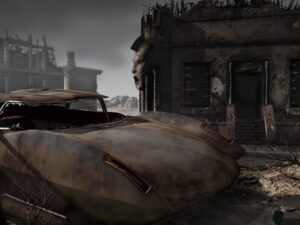
Fallout’s equivalent of the Nucleon is the Corvega, a car whose trunk-sized nuclear reactor has a disconcerting habit of melting down.
In 2077, China and the West went to war. (The substitution of China for the Soviet Union as the primary antagonist is a melancholy reflection of the times in which Fallout was made, when Russia was still widely expected to join the community of rules-abiding democratic nations — and to become a significant growth market for computer games in the process.) The world was effectively destroyed in the war. The only people who escaped the horrors of radiation exposure in the United States were those who were able to take shelter in one of the hardened, self-sufficient “vaults” that had been scattered around the country for just such an eventuality.
Fallout proper begins in 2161, casting you as a resident of one of these vaults who has been tasked with venturing out into the ruined world in order to locate a chip that is needed to keep your community’s water-purifying facilities functional. Everywhere you go during the game, you encounter the shattered detritus of an era when, as David Halberstam wrote in his book about the 1950s, the good life was defined as “finding a good white-collar job with a large, benevolent company, getting married, having children, and buying a house in the suburbs.” Of course, everything is wildly exaggerated for comedic effect — who could forget Nuka-Cola, or Pip-Boy, the clunkiest handheld PDA ever? — but there’s an unnerving resonance to the setting that you won’t find in The Forgotten Realms of Dungeons & Dragons. It may not be irrelevant to mention here that Tim Cain is himself a gay man — i.e., one of the sorts of people whom 1950s society preferred to pretend did not exist at all. (At the time he made Fallout, he was still closeted, living and working as he did in a hardcore-gamer milieu that was scarcely less prejudiced against people like him than the 1950s writ large had been.)
The Fallout team had grown to thirteen people by January of 1996, with perhaps the most notable additions being Chris Taylor as lead designer and Mark O’Green as dialog writer. Cain’s official title became “producer.” He listened to everyone, but he didn’t hesitate to say no to any proposals that violated the core retro-future vision. Any technology that didn’t look like someone could have dreamed it up in the 1950s got tossed. Ditto any of the lazily anachronistic contemporary-pop-culture references that were so endemic in other games.
But Cain’s vision for this game extended well beyond the boundaries of its fiction. With the impetus of GURPS behind it, it was to be a new type of CRPG in other, even more important ways, ones that would place their stamp on a whole ecosystem of games that would come later. Every bit as much as Diablo, Fallout deserves to go down in history as the urtext of a brand-new strand of the CRPG.
When they first began attempting to transfer the tabletop-RPG experience to computers in the late 1970s and early 1980s, programmers naturally tended to emphasize the things that computers could do well and to de-emphasize those that they could do less satisfactorily. Computers were good at smoothing out all of the lumpy complexities of Dungeons & Dragons combat, with its endless die-rolling, table-consulting, and round-counting, not to mention the arguments that inevitably arose from its hundreds of pages of baroque rules. They were less good, however, at simulating conversations with the people you met, or letting you choose your destiny in any less granular sense than whether to turn right or left at the next intersection in a dungeon. So, most CRPGs spread a thin veneer of story and world-building atop game engines that were really all about combat and logistics; they became “roll-playing” rather than “role-playing” games. (Seen in this light, the bestowal of the Dungeons & Dragons license upon the wargame publisher SSI starts to make a lot more sense…) Those CRPGs that did endeavor to do more with their fictions tended not to do so with much systemic rigorousness. (Ultima VII, for example, although a brilliant game in its way, is at its best when it’s content to be a walking-and-talking simulator.)
Tim Cain and company wanted to move beyond the old dichotomies and simplifications. Wasteland had actually tried to do some of the same things that they wished to do, by using a skill-based system inspired by the tabletop RPG Mercenaries, Spies, and Private Eyes. (Non-fantasy settings did tend to drive designers in that direction, if only to find a use for character attributes like Intelligence that weren’t obviously useful in combat that didn’t involve spell-casting.) But Wasteland had been hobbled by the 8-bit computers on which it ran; in practice, it devolved into a sort of skill and attribute lottery much of the time, forcing you to guess which one might be applicable to any given situation and then to actively “use” it from a menu. The faster processors and bigger memories and hard drives at the disposal of Fallout should allow it to implement a system that touched every aspect of the player’s experience far more organically.
As they were designing each area of Fallout, the team kept three broad character archetypes in mind, which not coincidentally coincide with the three pre-generated starter characters you can choose from in the finished game should you not wish to build one of your own. There was the brawler, who could be expected to fight his way through the game much as one did in the CRPGs of yore; the sneaker, who would solve problems using stealth and thievery; and the diplomat, who would rely on a sharp mind and a silver tongue to bend others to his will. Another of Tim Cain’s non-negotiable requirements was that every character you might make had to have a viable path forward in every situation. Ideally, this would make the character you controlled a reflection of you the player — or at least of the type of person you felt like play-acting as that day — rather than becoming an exercise in purely tactical min-maxing. (This does not mean that plenty of Fallout players haven’t indulged in plenty of min-maxing over the years…) The approach extended right to the climax of the game, where a sufficiently clever diplomat can convince the big villain to give up his nefarious schemes and commit suicide using nothing more than words.
Every aspect of Fallout is tailored to the person you happen to be playing. For example, if you’re a smart cookie, your dialog options reflect this. Ditto if you’re not so smart; Cain decided that anyone with an Intelligence below a certain threshold should be allowed to speak only in single-syllable words. The same general principle holds true when trying to operate or repair machinery, heal your wounds, duck into the shadows… you name it. At the time, no other CRPG had ever implemented such a comprehensive set of rules, to simulate all of your possible interactions with the world.
Then, too, within the framework of affordances and limitations of the character you chose to play, the designers strove to give you maximal freedom of choice at every juncture. You can lay waste to everyone and everything you encounter and still win the game. Or you can try to do as little killing as possible. When the game is over, you’re shown a closing movie that varies on the basis of the choices you made. “I wanted the player to know, ‘We saw you do that, and the game’s going to react to you,'” says Tim Cain. It’s the same ideology that Gabe Newell instilled into the team at Valve that was making the very different game of Half-Life at the same time, an insistence that the virtual world must acknowledge the things you do and respond to them, in order to ensure that your experience is truly your own. Fallout is not especially long by CRPG standards — you can play through it in about 25 hours — but it was explicitly designed to foster replays in radically divergent styles.
Given how intimately linked Fallout was to GURPS in spirit and systems alike, a series of events in February of 1997 ought to have been deadly to its conception of itself. That month Interplay sent Steve Jackson, who hadn’t been following the game’s progression at all closely, a demo of the work-in-progress. It opened with a now-iconic cutscene, in which a soldier shoots a civilian prisoner in the head to the soothing tones of the Ink Spots singing “Maybe.” Jackson took immediate umbrage. At first glance, it’s hard to understand exactly why. While the scene certainly had its fair share of shock value, it’s not as if he was a noted objector to violence in games; one of his company’s signature products was Car Wars, an unabashedly brutal game of Mad Max-style vehicular combat. (“We’re selling a very popular fantasy,” said Jackson to one journalist. “Have you ever been driving down the road and somebody cuts in front of you or otherwise infuriates you to the point where the thought flashes through your mind, ‘Now, if this horn button was a machine gun…'”)
It might be helpful to recognize here that, for all that no one could doubt Jackson’s genuine love for games, he was a temperamental individual and an erratic businessman, whose company went through endless cycles of expansions and layoffs over the years. Tabletop designer and writer S. John Ross, who worked with Jackson often in the 1990s and knew him well, told me that he suspected that, on this occasion as on many others he was witness to, Jackson was attempting to paper over a failure to do his homework with bluster: “There’s a lot of reason to suppose that Steve was just trying to cover for dropping the ball on giving the game an honest try, by overstating his reaction to the five minutes he actually spent with it, thus buying himself time to soften his view on that and actually get a view on the game past the intro — a gambit that didn’t pay off.” If this is a correct reading of the case, it was a dramatic misreading by Jackson of the strength of his own negotiating hand, as S. John Ross alludes.
Be that as it may, on February 17, 1997, Steve Jackson turned up in a huff at Interplay’s Southern California offices, only to have Brian Fargo refuse to meet with him at all. Instead he wound up sitting on the other side of a desk from Tim Cain for several uncomfortable hours, reiterating his objections to the opening movie and to a number of other details. Most of his complaints seemed rather trivial if not nonsensical on the face of them; most prominent among them was a bizarre loathing for “Vault Boy,” the mascot of “VaultTec,” a personification of the whistling-past-the-graveyard spirit of the mid-century military-industrial complex. Cain, who quite liked the maligned movie and adored Vault Boy, stated repeatedly that he “wasn’t empowered” to make the changes Jackson demanded. The meeting ended with no resolutions having been reached, and a dissatisfied Jackson flew home. A few days later, Brian Fargo came to Tim Cain with a question: how hard would it be to de-GURPS Fallout?
If Steve Jackson remains something of a black box, it isn’t so hard to follow Fargo’s line of thinking. The buzz that seemed to have been building around GURPs in 1994 had largely dissipated by this point; with a personality as idiosyncratic as this one at its head, Steve Jackson Games seemed congenitally unequipped to be more than a niche publisher. Meanwhile Interplay now had in the works several Dungeons & Dragons-branded CRPGs. (I’ll have much more to say about them later in this series of articles.) Unlike Dungeons & Dragons, the GURPS name on a box seemed unlikely to become a driver of sales in and of itself. What was the point of bending over backward to placate a prickly niche figure like Steve Jackson?
Jackson tried to backpedal when he realized how the winds were blowing, but it was to no avail. He wasn’t inclined to accept Brian Fargo’s assurances that, just because Fallout wasn’t going to be a GURPS game, Interplay couldn’t do one in the future. “What would you do if you were me?” he asked plaintively of a journalist from Computer Gaming World. “I work on it with them for three years, and then they decide not to go with GURPS. Why would I want to go through that again?”
Setting aside the merits or lack thereof of Jackson’s attempt to cast himself as the victim, the really amazing thing about all of this is how quickly the Fallout team managed to move on from GURPS. This was to a large extent thanks to Tim Cain’s modular programming, which allowed the back-end plumbing of the game to be replaced relatively seamlessly without changing the foreground interface and world. In place of GURPS, he implemented a set of tabletop rules that Chris Taylor had been tinkering with in his spare time for more than a decade, jotting them down “on the backs of three-by-five cards, in notebooks, and on scraps of paper.” Once transplanted into Fallout, his system became known as SPECIAL, after the seven core attributes it assigned to each character: Strength, Perception, Endurance, Charisma, Intelligence, Agility, and Luck.
That’s the official story. Having conveyed it to you, I must also note that there remains much in SPECIAL that is suspiciously similar to GURPS. GURPS’s idea of allowing players to select disadvantages as well as advantages for each character as an aid to better role-playing, for example, shows up in SPECIAL in the form of “traits,” character quirks — “Fast Metabolism,” “Night Person,” “Small Framed,” “Good Natured” — that are neither unmitigatedly good nor bad. I haven’t seen the contract that was signed between Steve Jackson Games and Interplay, but I do have to suspect that, had Jackson been a more conventionally businesslike chief executive with deeper pockets, he might have been able to make a lot of trouble for his erstwhile partner in the courts. But he wasn’t, and he didn’t. In rather typical Steve Jackson fashion, he let GURPS’s last, best shot at hitting the big time walk away from him without putting up a fight.
The breakup with GURPS was only the last in a series of small crises that Fallout had to weather over the course of its three-plus-year development cycle. “Nothing against Brian [Fargo] or anybody else at Interplay,” says Leonard Boyarsky, “but at the time, no one really thought much about Fallout. Brian gave us the money and let us do whatever we wanted to do. I don’t think that was [his] intent, but that’s how it ended up.” As Boyarsky hints, this benign neglect gave the game time and space to evolve at its own pace, largely isolated from what was going on around it — when, that is, it wasn’t being actively threatened with cancellation, which happened two or three times over the course of its evolution. Only in the frenzied final few months of the project, leading up to the game’s release in October of 1997, did it become a priority at Interplay. By that time, Diablo had become a sensation among gamers, leading some there to think that there might be some serious commercial potential in a heavier CRPG as well.
Such thinking was more or less borne out by the end results. Although Fallout did not become a hit on anything like the scale of Diablo, it was heralded like the return of a prodigal son by old-timers in the gaming press. “With a compelling plot, challenging and original quests, and, most importantly, a rich emphasis on character development, Fallout is the payoff for long-suffering RPG fans who have seen the genre diluted in recent times by an endless stream of half-baked, buggy, uninspired duds,” wrote Computer Gaming World. The game sold well over 100,000 copies in its first nine months. It was only the beginning of a trend that would give fans of high-concept CRPGs as much reason to smile as Diablo fans in the years to come.
I’ve offered up quite a lot of explicit or implicit praise for Fallout to this point. Sadly, though, I do have to tell you that it also has its fair share of weaknesses in my opinion. In fact, I’m not sure I’ve ever played another game that marries aesthetic slickness and formal innovation with abject clunk to quite the same degree.
When you first fire it up, Fallout finds a way to put both its best and its worst foot forward. It bids you welcome with an opening movie that’s nothing if not striking and memorable, being the same one that Steve Jackson objected to so vehemently. This kind of clashing juxtaposition of tone and content would become a bit of a media cliché in the post-Sopranos Age of the Antihero, but it was still as jarring as it was intended to be in 1997. However you feel about it, you can’t deny that it’s brought off with astonishing deftness and confidence. We’re a long, long way from the tacky babes in chain-mail bikinis of the CRPGs that came before — and, for that matter, plenty of those that came afterward.
Thanks to Interplay’s proximity to Hollywood and the connections Brian Fargo had cultivated there, Fallout is blessed with an extraordinary cast of voice actors to go with its distinctive, self-assured visual aesthetic. Ron Perlman — the beast from Beauty and the Beast — narrates the second stage of the intro. Other voices that turn up later include that of Richard Moll, best known as the simple-minded bailiff of Night Court, and Richard Dean Anderson, who played the ever-inventive protagonist of MacGyver.
Once we click the “New Game” button, we’re dropped into a character-building system that’s visually of a piece with what has come before. Here we can choose to play one of the three pre-generated characters or make one of our own. Doing the latter is unavoidably more complicated, but the game does a pretty good job of explaining itself even to those who refuse to glance at the manual.
So far, so good. Another movie sets up the first part of the plot, telling us that the vault in which we’ve lived all our life has a failing chip in its water purifier. We must venture out into the world to find another one before the old one dies completely, which will happen in 150 days — yes, this game has a time limit, although there will still be plenty to do after we find the replacement chip, what with all the other problems we’re about to uncover on the Outside. For now, though, off we go, walking through the door to our vault for the first time in our life. Behind it we find… an anonymously dull cave system, full of rats and not much else. It’s right here that we’re first confronted with the fact that, despite the fresh new coat of paint Fallout has received, there is still much that is old-school about the game.
There’s a sort of Puritan ethic to many old CRPGs, an insistence that you have to earn the right to eventually have fun by struggling for a few hours as a glorified exterminator, clubbing pissant vermin with first-level characters who are weak as kittens. Fallout doesn’t start you out as woefully unprepared for the world you face as some CRPGs do, but it certainly doesn’t go all-out to welcome you into its world either. After killing or dodging rats in the caves outside your own vault, you travel to another, abandoned vault in in the hope of salvaging a water chip from it. There you encounter… you guessed it, a whole lot more rats. If you complain to them about this slow and dull beginning, Fallout fans will rush to tell you that the game opens up in the course of things and becomes much more interesting. By no means are they wrong about this. But why can’t it grab our interest from the start? It seems to me that games should strive to delight and intrigue us right from beginning all the way to the end. We’ve earned our fun, if that’s the way one wishes to think about it, via all the boring tasks we did earlier in the day before we finally got to sit down in front of our gaming computer.
Alas, other aspects of Fallout are annoying from the start and never really do improve. Its interface is the opposite of intuitive, seeming to be predicated on the philosophy that, if one mouse click is good, five clicks must surely be better. Everything you try to do is more awkward and fiddly than it ought to be. It’s doubly frustrating because so many of the problems could have been fixed so easily. When you try to conduct transactions with bottle caps — this post-apocalyptic world’s equivalent of coinage — you find that you’re inexplicably only allowed to move 999 of them around at a time, meaning you have to go through multiple rounds of the process just to effect a major purchase or sell off a decent-sized pile of loot. Would it have killed the team to add an extra digit or two here? When you come across a new item and rush to your inventory to see what it is and whether you want to equip it, you find that it’s been added to the end of your list of objects carried, meaning you have to rummage your way down through potentially dozens of other items to get to it. Vital messages scroll by in green text in the tiny window at the bottom left without doing anything to draw your attention to them. They’re shockingly easy to miss entirely. No one of these little sources of friction is sufficient to ruin your experience on its own, but they do begin to add up.
Fallout needed to reconcile the free-roaming real-time movement which late-1990s gamers demanded with a set of turn-based combat rules. As we’ll see in future articles in this series, most Renaissance-era CRPGs with aspirations of offering a deeper gameplay experience than Diablo had to negotiate similarly tricky terrain, for which they deployed various solutions. I have to say that I find Fallout’s one of the least satisfying. Whenever nearby enemies notice you, the game automatically switches into turn-based mode, in which every action you take costs some number of action points. When you run out of action points, there’s nothing to be done but click the (too small and weirdly obscure) “Next Turn” button, at which point everyone else gets a turn before control comes back around to you. It makes for painfully slow going in even the most trivial fights. The worst moments are when you find yourself just at the edge of the perception range of a group of enemies, and the game keeps switching spasmodically between its real-time and turn-based modes. It’s enough to convince you to put all of your skill points into Sneak, just to try to avoid the whole mess.
While I’m complaining, let me note as well that I’m not at all fond of time limits in games like this — not even of fairly generous ones, as Fallout’s admittedly is. Nobody enjoys being told that they’ll have to start over because they spent too much time dilly-dallying in a game’s world. There are other, subtler ways to inculcate a sense of drama and urgency.
Of course, all of these judgments are just that: judgment calls on the part of yours truly. You may very well find that those things I call weaknesses are strengths for you. Certainly the original Fallout still has a devoted fan base who continue to swear by it as the purest articulation of a unique vision, even after its name has gone on to spawn a series of vastly more popular, faster-paced games and, most recently, a popular television series. (Who could have imagined such things when Tim Cain first began to tinker with his GURPS CRPG? Surely not him!) As I grow older, I continue to learn over and over that one person’s great game is another’s boredom simulator. If you love Fallout, I’m very happy for you and would never presume to tell you you’re wrong to feel as you do. Please don’t hate me for having more mixed feelings about it. Believe me, no one is sadder than I am that I can’t fall head over heels in love with it.
There’s just one part of Fallout that is, I would argue, objectively broken: the companion system. In the last few months of the game’s development, when it was suddenly looking like it might have real hit potential in the wake of Diablo’s spectacular reception, a dictate came down from Brian Fargo stating that it must be possible to recruit companions to join you in your quest. So, a handful of these recruitable non-player characters were shoehorned in. Their implementation is woefully incomplete. You can’t even trade items with your friends; some players have been reduced to using their pickpocketing skill as a way to get the right equipment into the right hands. But worst of all is combat when companions are involved. Lacking the time to write custom code to control the companions’ behavior, the team employed the same routines that were already being used to control non-recruitable characters. It’s good fun when you’re fighting a bunch of thugs and one of them mows down most of his own people with his Uzi in his eagerness to put some bullets into you. It’s rather less fun when your character is the one taking friendly fire. Circular firing squads abound when playing with companions, such that the wisest policy is probably just to go through the entire game solo. But having to tiptoe through a minefield in order to have a good time, picking and choosing from the opportunities a game offers you, is pretty much the definition of “broken” in game design, not to mention the antithesis of everything Fallout purports to stand for.
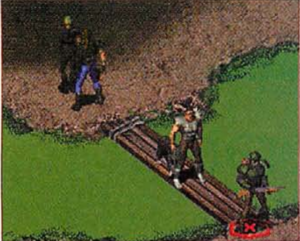
Sometimes your companions will box you in in a narrow space and refuse to move. Your options at this point are to go back to an old save or just to shoot their useless asses.
In my perhaps jaundiced eyes, then, Fallout is a piebald creation, combining amazing aesthetics and world-building with game systems that are groundbreaking in the abstract but sometimes excruciating in execution. Mixed results like these are often the fate of games that dare to push in bold new directions and rejigger the matrix of the possible. The immaculate conception is the exception in game design; change more commonly comes in piecemeal, initially imperfect fashion. The CRPGs that would follow Fallout as the Renaissance gathered steam would embrace its strengths, whilst smoothing out many of its rough edges.
Next time, we’ll see how a venerable series from the previous era of CRPGs adapted its old-school approach to the changing times, and was rewarded with another solid hit which demonstrated that the CRPG’s doldrums were fast coming to an end.
Did you enjoy this article? If so, please think about pitching in to help me make many more like it. You can pledge any amount you like.
Sources: “Fallout and Yesterday’s Impossible Tomorrow” by Joseph A. November, from the book Playing with the Past: Digital Games and the Simulation of History. The books Beneath a Starless Sky: Pillars of Eternity and the Infinity Engine Era of RPGs by David L. Craddock, Designers & Dragons: A History of the Roleplaying Game Industry, Volume 2, by Shannon Appelcline; Burning Chrome by William Gibson; The Fifties by David Halberstam. Computer Gaming World of January 1997, May 1997, and January 1998; Retro Gamer 186; The Austin American Statesman of April 18 1988.
I also made use of the Interplay archive donated by Brian Fargo to the Strong Museum of Play and of Interplay’s 1998 SEC annual report.
My thanks to S. John Ross, who shared with me his memories of Steve Jackson Games and his impressions of its titular founder. And thank you to Felipe Pepe, Zoltan, Busca, and other commenters for pushing me to add some nuance to the discussion of the overall state of the CRPG genre that opens this article.
Most of all, this article owes a debt to Tim Cain’s YouTube channel, which is a consistent, oddly soothing delight that’s become a fixture of my lunch breaks, regardless of whether “Uncle Tim” wants to tell me about games or chocolate. (“Hi, everyone. It’s me, Tim. Today I’m going to talk about…”) I’m sorry that Fallout doesn’t completely do it for me, Tim. I hope I’ll love Arcanum when I get there.
Where to Get It: Fallout is available as a digital purchase at GOG.com.
Footnotes
| ↑1 | This American Steve Jackson is not the same man as the British Steve Jackson, the co-founder of Games Workshop. |
|---|

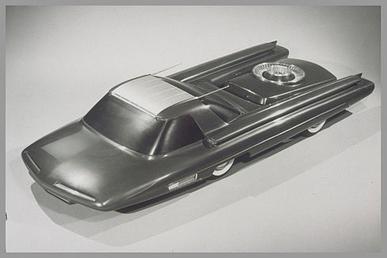

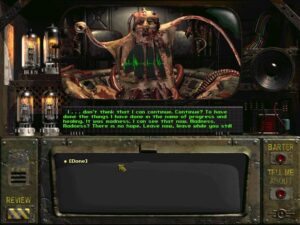

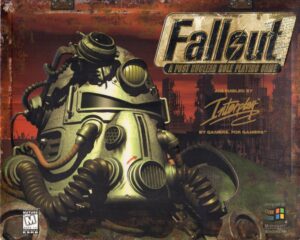
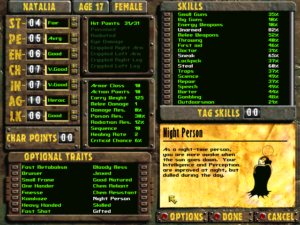

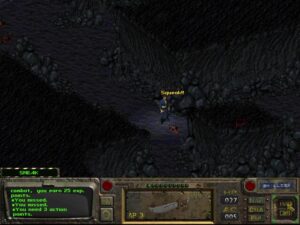
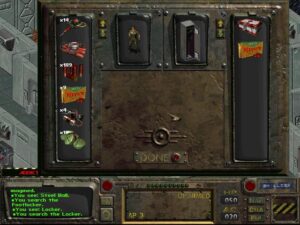
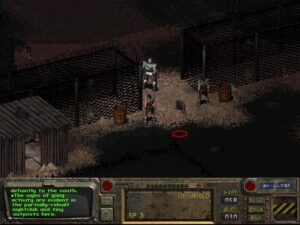



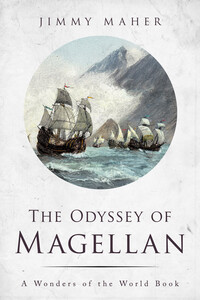
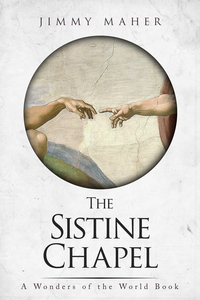






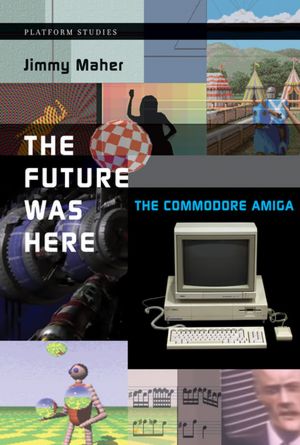
Zack
January 24, 2025 at 5:32 pm
It’s crazy to me that Diablo could ever have been considered a CRPG, or indeed that there was a debate around it at all. Though it would be its sequel that more or less launches the Hack’n’Slash/ARPG (depending on where in the world you are) genre and gave it all of its tropes and well known mechanics, I have never once myself considered it could be seen as a CRPG.
So, I learned something today!
stepped pyramids
January 24, 2025 at 10:32 pm
“CRPG” seems to have taken on a narrower meaning in recent years. At this time it really just meant “computer role-playing game”, and maybe some people had started contrasting it with “JRPG”. I’m still not clear on what people mean by it now; I’ve seen people say that the Elder Scrolls series aren’t “CRPGs”, for instance, and that makes no sense to me.
Zack
January 24, 2025 at 11:27 pm
Nowadays I guess it means more games in the vein of Baldur’s Gate, which is probably the next one to come or not far of. Mostly a Pen’n’Paper-like offer. Maybe it’s a generational thing; people who were already playing when CRPGs “appeared” probably have kept the wider definition in their mind versus what it is now.
Zed Banville
January 25, 2025 at 6:27 am
Baldur’s Gate ditched the turn-based tactical combat of the Gold Box games and Dark Sun games for a “Real-Time with Pause” system derived from the RTS genre, on the assumption that players could no longer handle the complexity of earlier CRPGs. RTwP combat combines the worst aspects of turn-based systems with the worst aspects of real-time systems, achieving neither tactical depth nor visceral action.
Baldur’s Gate also had shoddy exploration as well.
However, Bioware did pioneer an emphasis on the personalities of companions who could be drafted into the party, expanded greatly in BG2 which pioneered companion romances, and swiftly leading in the 2000s to the adoption of an emphasis on cinematics over any kind of gameplay.
Gwydden
January 25, 2025 at 8:56 pm
I read a relatively recent interview with James Ohlen, one of the creative leads behind Baldur’s Gate 2, where he claimed the game’s companion focus was inspired by Final Fantasy 7: a case of WRPG and JRPG crosspollination.
Jimmy Maher
January 26, 2025 at 12:13 pm
I believe I recall reading that the influence goes all the way back to Baldur’s Gate I, although I need to do the research properly before I make that claim in an article.
Vince
February 6, 2025 at 7:03 am
It’s really interesting to see the evolution of NPCs in Bioware games.
In BG they are still very close to the “interchangeable bunch of stats” that was common in early RPGs, most of their personality comes from their character portraits and voice lines.
In BG2 they are much more fleshed out, each having a personal quest and evolving dialogue, but still mostly accessory to the plot.
By KOTOR, they are fully “JRPGized”, you collect them as part of the evolving plot and they are very much front and center, as important as the main character, if not more.
John
January 25, 2025 at 2:59 am
The one thing that people can agree on about CRPGs is that no one can agree what a CRPG is. I suspect that the people who’d like to exclude Elder Scrolls games from the genre do so on the basis that Elder Scrolls games are in real time and that success depends too much on player skill and not enough on character stats. I confess I lean a little in that direction myself but I am too old and too tired to fight about it.
Mike Russo
January 25, 2025 at 5:53 pm
I definitely remember gatekeepers saying Diablo wasn’t a “real RPG” at the time it was released – born I think of elitism but also anxiety that the more traditional CRPGs genre aficionados enjoyed might be going the way of the dodo. While there are plausible arguments that the CRPG “dark age” of the mid 90s was overblown – there’s a comment along those lines further down this page – it very much was discussed as a real phenomenon at the time. But the focus IIRC was on “real,” not “RPG”, since the gaming press at least understood it as an RPG, with prerelease interviews citing the roguelike influence to make the lineage plain and magazine genre tags clearly putting it in the “RPG, but bold and exciting!” box. Here’s the UK PC Gamer review, for example, which is pretty typical of the contemporary reception:
https://www.reddit.com/r/Diablo/comments/idcynz/diablo_pc_review_april_1997/#lightbox
(I think from the blurb at the end of this article the next installment in the series will focus on Might and Magic VI; Baldur’s Gate will probably complete the trilogy)
Techno Pagan
January 25, 2025 at 7:45 pm
Elder Scrolls games up to and including Morrowind were definitely CRPGs. They had real time combat but it was highly dependent on character stats.
Jimmy Maher
January 25, 2025 at 10:47 am
To be honest, it’s amazing to me that anyone would *not* consider Diablo a CRPG. You choose a character archetype, then build up his stats and level by exploring dungeons and killing monsters. There’s a story and an ending — maybe not an overly complicated one, but it’s there. If Diablo isn’t a CRPG, then why is something like The Bard’s Tale — or, if we consider the real-time element important, Dungeon Master?
But definitions have perhaps changed in the context of modern games, a subject I’m woefully out of touch with. It seems to me that back in the day, the “Diablo isn’t a CRPG” crowd were largely engaging in a form of gatekeeping that’s all too common in gamer culture, trying to marginalize Diablo and the people who played it because it wasn’t the sort of CRPG they preferred. I say this even though I’m not a particular fan of Diablo.
John
January 25, 2025 at 3:53 pm
When I first played Diablo back in the 90s, it did not occur to me that Diablo was (or was supposed to be) an RPG. While clearly RPG-adjacent, it was simply too dissimilar, visually and mechanically, to the RPGs I’d played to that point.
Tucsonbandit
January 25, 2025 at 9:36 pm
yes, I did not even consider that it might be a RPG at the time. Just felt like a more ‘complicated’ arcade type game I had played in arcades as a little kid like ‘Gauntlet’.
Zack
January 30, 2025 at 11:18 am
I’m definitely on the younger side for this blog, but for someone like me, when you say “CRPG”, I imagine something ala Fallout 1/2, Baldur’s Gate, Planescape, etc… right away. Or in terms of modern games, Pathfinder Wrath of the Righteous, or Baldur’s Gate 3, Rogue Trader… So basically a highly codified format that harkens specifically to that time in its presentation at least.
Compared to that, yeah Diablo 1 never struck me (retroactively, I never played it at release) as a CRPG. But reading comments and articles here definitely highlight how nebulous and wide the CRPG tag really is.
Tom
January 30, 2025 at 7:40 pm
I think the term “Hack&Slash” applies best to Diablo as game in the tradition of games like “Gauntlet” and 1990s EAs comparatively unknown “The Immortal”.
Ido Yehieli
January 24, 2025 at 6:08 pm
Fortunately I’ve played fallout during the golden age of gaming (namely, 14) and had a lot of patience in 1997 to get used to the clunky interface (which I’m pretty sure didn’t seem that clunky to me at the time).
I’ve replayed it multiple times in recent years and would much rather repeat that than play fallout 3 or 4 (which I’ve never gotten very far into). One of the strengths of the first 2 games is that the battle system doubles as a very solid turn-based tactics battle game.
uncivil
January 24, 2025 at 6:15 pm
This article will be a melancholy reflection of the times when the West thought their gangster attitude of threats, fake promises and gaslighting was going to win them a war with a nuclear power. At no point in time did the author stop to think what he was writing, ironically enough, in an article about a nuclear post-apocalyptic game.
Anthony Noel
January 28, 2025 at 5:05 am
I nearly did a spit take when I read the line “join the community of rules-abiding democratic nations “. I’m hoping it was intended ironically but I doubt it.
Jakub
January 24, 2025 at 6:59 pm
Hello!
There’s a column of bright green dots to the right of your equipped weapon on main screen, that’s the bullet counter.
Jimmy Maher
January 24, 2025 at 8:20 pm
Oh, my. How… embarrassing. Let’s just delete that paragraph, shall we? (Man, I wish I’d known that earlier.) Thanks!
Keith
January 24, 2025 at 7:22 pm
> The only people who survived in the United States were those who were able to take shelter in one of the hardened, self-sufficient “vaults”
Picking nits, here. Were vault-dwellers the only surviving people? I don’t know Fallout’s lore very well, but I always thought ghouls, mutants, and other people living in the wasteland were descendants of those who survived outside of vaults.
Jimmy Maher
January 24, 2025 at 8:23 pm
Good point. Thanks!
Ahab
January 24, 2025 at 7:23 pm
Most infuriatingly of all in my book, you can’t see how many bullets you have in your gun without going into the inventory screen, an action which costs you precious action points when you’re in combat mode (about which more in a moment).
But… this is onscreen at all times. Whenever you have a gun equipped, remaining ammo shows as a meter just to the right of the weapon graphic/button. Maybe this isn’t exactly the same as showing you a numerical ammo count, but it does tell you when your gun is empty (or close to it) without needing to manually check for bullets.
Matthew Johnson
January 24, 2025 at 9:09 pm
GURPS was not the first game to give you extra character-building points in exchange for disadvantages – the first one I know of was Champions (which debuted in 1981, five years before GURPS) but there might have been earlier ones.
The “quirks” mechanism was unique to GURPS, but unline the traits in Fallout quirks have no mechanical effect – basically, you get a point for up to five minor things that are unique about your character (e.g. “hates when people call him by anything but his full name.”)
Ahab
January 24, 2025 at 9:13 pm
*feel free to delete my above comment – I see someone beat me to it before I could hit Send*
IMO, Fallout is the best CRPG of the renaissance. The thing that really makes it stand out to me is the choice and consequence aspect. Ultima, in its age of enlightenment, never really gave you a choice – you can do bad things, but you’re not supposed to, and the spiritual punishment isn’t worth it. But Fallout made me feel like the things I did mattered, had long-lasting impact on the world, and that if I made other choices, they’d have been valid and meaningfully different. I remember the first time I visited Junktown, I inadvertently antagonized the sheriff and submitted to arrest rather than risk escalating into a deadly shootout. He threw me in jail for a day and ordered me to leave, and I did, never to return in this reality. But on a replay, I took a different demeanor, and wasn’t just tolerated, but invited to join his posse in a criminal takedown! This side-quest, which I missed on the first time, had multiple choices to make, and to this day, I wonder what other outcomes could have been possible. Baldur’s Gate didn’t really have anything comparable to that – at best you had binary good/evil choices, and even those were infrequent. To this day I can’t think of many games that do choice and consequence as well as Fallout.
Party-based combat is indeed a weak spot and the game would have been better off without it, but that didn’t affect my enjoyment all that much. Mainly because my incompetent party members lasted about as long in combat as inflatable targets at a shooting range, so I spent most of the game going solo anyway.
Jerzy
January 24, 2025 at 9:56 pm
Well said. Choice and consequence are hard to do well! Are there other games that manage it that you’d recommend, besides Fallout?
My own recent favorite in this regard is Roadwarden (2022).
Ahab
January 24, 2025 at 11:29 pm
Planescape: Torment does it pretty well, in its own distinctly metaphysical way.
Deus Ex, a game that I anticipate Jimmy will have a perfectly miserable time with if/when, also really stands out. Coming from Goldeneye 007, where each mission has an intended sequence of actions and will consider the attempt failed if you deviate from the slightest, Deus Ex blew my mind by presenting a hostage situation early on that you could solve stealthily, diplomatically, with muscle, speed, sniping, hacking, and characters in the game would actually acknowledge your recklessness/professionalism/cowardice! You could even just blow the whole place up and the game would continue on, but you’d have to live with the fact that pretty much everyone, including the bloodthirsty dragon who wanted to go in guns blazing, now hates you for it. It’s just too bad you can’t affect the plot in big ways, but there are quite a few many small ways.
One lesser-known game that I stumbled onto is Long Live the Queen – visual novels are really not my cup of tea, so I don’t know how typical this is of the genre, but you make decisions every day, and they often have consequences you can’t predict. Early on, I thought I outsmarted a scheming duchess and gave her a proper comeuppance – days later her brother came out of the woodwork and blindsided me with a crafty scheme of his own. And made it poignantly clear that this was a lesson in humility! It didn’t have to be this way, either. It’s all prescripted, like a choose-your-own adventure book, but there are still an impressive number of possible plot permutations, and no clear correct/incorrect decisions.
John
January 25, 2025 at 3:07 am
I am speaking well beyond the limits of my competence here, but my impression is that Long Live the Queen is fairly different from most visual novels, which don’t have anything like Long Live the Queen’s skill system or mood and education mechanics.
Dayyalu
January 25, 2025 at 12:22 pm
Ah, good to see that Fallout has your approval. Choices and consequences have been a matter of ferocious discussion for years, and the death struggle between “cinematic” RPGs and “grognard” RPGs a thing of wonder.
I dimly remember that Deus Ex was not even planned as a RPG (and it isn’t, in a way) but as a shooter, before becoming more akin to the System Shock/Ultima Underworld style of what our contemporaries call “immersive sim”. But maybe I’m wrong, been years since I read on its development cycle. Despite its systems being completely broken, it is marvelous that DX tries to make even the most worthless skills useful (hell, some levels are built to take advantage of *Swim* of all things!).
Long Live the Queen isn’t a VN, it’s another Japanese genre that had quite the success in the past, Raising Sims. The best known one in the West is Princess Maker 2, and replayability is built in the genre (as it presumes that the player will have a deeper knowledge of the systems and curiosity to go for specific endings and solve problems in a different way). Amusingly so, there are Western copies of the system like Legionary’s Life/Heads Will Roll that reinvent the genre in a completely different setting. Well, Heads has its dumb romance system that is better ignored but…
@Jerzy, regarding Choices&Consequences, there are quite a few games that pride themselves on that. Obsidian’s output like Alpha Protocol or in indie gaming the (graphically horrible but smartly written) Geneforges from Jeff Vogel.
Alianora La Canta
January 25, 2025 at 9:41 pm
Long Live The Queen (which very much is my cup of tea – I threw nearly 100 hours into exploring its possibility space a few years back, and it got me into game design) has an unusual combination of elements:
– visual novel aesthetics, short interludes and in-narrative choice structure
– raising sim core game loop
– a complicated mood simulator the like of which I’ve never seen in any other game
Visual novels often have no significant choices at all, with the choices only allowing minor alterations to the story.
However, there are also plenty of visual novels that offer quite a bit of choice, of varying levels of complexity and significance. Most of Hanako’s other games are choice-and-consequence visual novels in one sense or another; Confines of the Crown is perhaps the best straightforward example it has and Magical Diary (both entries) are good for more complex interplays of choices and statistics. Examples of choice-and-consequence visual novels from other publishers which I’ve played and enjoyed include the Cinderella Phenomenon, Cinders, Signs of the Sojourner (arguably) and Women of Xal.
Choice-and-consequence is also common in other interactive fiction games. Commercial examples include the Choice of Games – consider starting with Choice of the Dragon, Choice of Robots or Creme de la Creme – and Inkle offerings such as 80 Days or Overboard!
Speaking of Princess Maker, its last entry (V, released 2007) had more narrative sections but was very long and had a lot of micro-management.
(I don’t think Jimmy Maher will get to Long Live The Queen for a while, given it was released in 2012. Its studio, Hanako Games, released something much closer to Princess Maker 2 called Cute Knight in 2003, and even that is some distance away).
John
January 27, 2025 at 2:12 am
I don’t think Jimmy will ever get to Long Live the Queen or that the blog would necessarily be well served if he did. As much as I loved it, which is not the kind of thing I ever thought I’d say about a game that looks like that, Long Live the Queen was an extremely niche indie game and simply doesn’t occupy enough space in the cultural landscape.
Buck
January 29, 2025 at 5:44 pm
I knew Deus Ex was special when I went to the women’s toilet (it’s an RPG, you check every room) and it had consequences.
Martin
January 31, 2025 at 1:04 am
You are not supposed to admit to doing that.
David R
January 24, 2025 at 9:49 pm
I love Fallout 1 and 2 despite their shortcomings. One thing you didn’t mention is that in the initial release of Fallout 1 there were several game-breaking bugs that corrupted your save game files, forcing you to start the game over. Fortunately, by the time I bought the game there were patches available but I did lose a few hours of play time.
Was Fallout the first CRPG to do an epilogue based on your actions during the game? This has become a common feature in newer games (Wasteland 3 even had a country singer sing about your successes and failures at the end) but I don’t recall anything like it before Fallout.
Jimmy Maher
January 24, 2025 at 10:01 pm
The adventure game Titanic: Adventure Out of Time did it about a year before Fallout. But I can’t think of any earlier CRPGs that did it.
Zack
January 24, 2025 at 11:28 pm
Maybe time to send a message to the CRPG Addict to verify!
Ice Cream Jonsey
January 24, 2025 at 10:33 pm
I have been playing many computer games from the 1990s lately, and it was a wild and experimental time for user interfaces. I am not surprised that the green dots for bullets wasn’t completely obvious. When I restarted Fallout last year, I remember thinking those were action points at first before realizing later. There have been a couple RPGs I have started from that time periods recently where I honestly don’t know how to start playing, and I lived through the time and was an active purchaser of similar games.
Jimmy Maher
January 25, 2025 at 10:34 am
What I’m about to say is not intended as an excuse for my bone-headedness. I should have taken the time to look in the manual before I jumped to conclusions, and certainly before I dinged the game in public. I spent hours hiding in shadows or bashing things with crowbars because I was so annoyed with not being able to get a simple ammo count — or so I assumed — and simultaneously too lazy to confirm my assumption. My Lord, am I stupid sometimes. That now-deleted paragraph deserves to stand as one of the lowlights in this blog’s long history. I’m still twitching with embarrassment.
Having said that: Fallout’s interfaces are amazing from the standpoint of aesthetics and atmosphere. It’s extremely unusual for a 1990s game to have such a clear-eyed sense of the exact image it wants to present, and then to hew to it so absolutely. At the same time, though, the interfaces prioritize atmosphere over clarity, and that’s never a good idea, no matter gorgeous the visuals wind up being. Few games could have benefited more from a few days under the thumb of a professional usability consultant.
David R
January 25, 2025 at 11:28 pm
Late 90’s games still took a while to install from CD (despite CD-ROM drives getting much faster during that decade), so most players (me included) would read through the manual and have the weird interface quirks explained to them already by the time they started the game.
That is another handicap of the game historian not necessarily being able to play each game on contemporaneous hardware – you miss out on some of the original experience.
I do agree with Jimmy though that Fallout’s turn-based combat can be very tedious, even when you know your ammo count. There’s a particular area of Fallout 2 where if you perform a certain set of actions for a faction, a whole town will be hostile. Since you have to escape the town, you have to wait through agonizing minutes of watching unarmed civilians running away from you. Not a great experience.
Zed Banville
January 25, 2025 at 3:55 am
***
In early 1994, when Interplay’s founder and CEO Brian Fargo said that he was interested in licensing a tabletop RPG property for adaption into a computer game, Cain thought he saw his chance.
An avid tabletop role-player since childhood, Cain had in recent years become a devotee of a system called GURPS, owned by the Austin, Texas-based outfit Steve Jackson Games.[1]
…
These events occurred in December of 1994.
…
Be that as it may, on February 17, 1997, Steve Jackson turned up in a huff at Interplay’s Southern California offices, only to have Brian Fargo refuse to meet with him at all.
…
Further, the Dungeons & Dragons license had finally been liberated from the unworthy clutches of SSI, had in fact come to Interplay. (I’ll have much more to say about these events later in this series of articles.) Fargo was already talking about it as “the license to print money.” Unlike Dungeons & Dragons, the GURPS name on a box seemed unlikely to become a driver of sales in and of itself.
***
The agreement between Interplay and TSR, granting the former the license for AD&D games in the Planescape and Forgotten Realms campaign settings, was announced to the world in Dragon Magazine #211, November 1994 (page 72). This means that Interplay already had the AD&D license, though limited to particular campaign settings, before anyone at Interplay had even settled on a post-apocalyptic setting for their GURPS game. It certainly was not new to 1997, as is implied later in the article, where Interplay’s agreement with TSR is first mentioned after the incident with Steve Jackson.
Interplay failed to make quick and effective use of its AD&D license: although Brian Fargo was a fan of the Planescape setting and initiated three projects for it, one was cancelled (a console game based on King’s Field), one became part of the Stonekeep II project which itself was ultimately cancelled, and the third eventually entered real development on a game engine developed by another company and released in 1999 as Planescape: Torment. Meanwhile, the only AD&D game released by Interplay prior to TSR’s collapse was an RTS (developed by another company) called Blood & Magic in 1996, and the only AD&D RPG developed by Interplay before Planescape: Torment was the poorly-received Descent to Undermountain, released in December 1997. This means that more than three years had passed from the agreement between Interplay and TSR before Interplay managed to release its first RPG using the AD&D license, by which time TSR itself had suffered a financial crisis and become a subsidiary of another company.
Quite far from Fargo’s hopes of a “license to print money”.
Jimmy Maher
January 25, 2025 at 10:01 am
Ah, how I forget Descent to Undermountain, the most misguided branding exercise in gaming history? ;) Thanks!
Alex
January 25, 2025 at 8:22 am
I definitely can relate to your impressions. I was there when Fallout 1 was released, still own a old copy and beat it one time when I was a teenager, but then forgot about it later on. In other words, I´m distanced.
After spending many hours with Fallout 3 and New Vegas (with and without mods), I decided to return to the first one and really was surprised how much it aged in the way you described it. In my book it is still is a good game, but more interesting as a historical “artifact” than something you can really sink your teeth into compared to more modern design standards. Would be hard for me to recommend to a younger generation of players unless they are kind of hardboiled.
Luckily, it is on sale so regularly that everyone can make up his or her own mind.
Adam Huemer
January 25, 2025 at 9:31 am
I just discovered your blog and enjoy it a lot, will relaxingly read articles over the next weeks in my free time.
Zoltan
January 25, 2025 at 10:30 am
Dear,
I comment very rarely, but that part where you jump between 1992 and 1997 took me with great surprise.
I felt that that section was driven by the need to justify that CRPG was a stagnating genre for the most part of the mid-ninties in dire need of reform.
Yet, even this site covered some of the important milestones that drove to the renessaince that came in 1997.
I have to wonder how these developments could be ignored and how that critical era can be downplayed that much.
So let me address certain points in that pretext:
Were games in 1992 hard to distinguish games by 1992?
The main CRPS of the era were very different from each other. Ultima Underworld, Ultima VII, Might and Magic III, Lands of Lore and Betrayal at Krondor and Dark Sun Shattered Lands.
Your list is saying that 19
Were the games too too stats heavy? From the same titles I justed mentioned only Dark Sun requires a good understanding of the ruleset, the others are surprisingly light on rules.
American publishers disappeared? 3DO (Might and Magic), EA (Ultima, System Shock), SSI (Dark Sun), Bethesda (Elder Scrolls), Sierra published the biggest titles in the 1993-1996 period.
Lack of multimedia? Lands of Lore is fully voiced, Betrayal at Krondor is cinematic.
No innovation? Ultima Underworld produced an immersive 3D world which was followed by System Shock, Daggerfall had the largest open world ever, Ultima VIII tried to adopt action elements, Dark Sun was the clear precoursor to Fallout and Baldur’s Gate.
Neverwinter Nights and Meridian 59 made breakthroughs in MMO gaming.
Was SSI as a showelware publisher? They built a completely new engine for the Dark Sun games and they also published the 2 Ravenloft games, and while those 2 are clunky, they are certainly not derivative.
Also, let’s not forget that during a similar period ID released Doom, Doom II and Final Doom.
Clearly there was a drop in the number of high profile RGPs by 1995-1996, but this came due to other factors than the article suggests.
Chiefly there were some high profile failures which I attribute more to the complexity of the genre and the inadequate tooling of the DOS era made highly buggy, unstable games.
Plus innovation is a double edged sword, many of the new features were experimental and these features were not well received.
The cyclicality of the industry meant that as games moved from DOS to Windows new engines had to be created, however development times became longer. Sequals were a big part of the renessaince for a good reason.
Even if we look at ID, an FPS maker, they only created Doom, Doom II and Final Doom in the 1993-1996 period.
If we add this together we get a way more nuanced view on why RPG output dropped around 1995-1996 and how it re-emerged at the end of the decade.
Otherwise a very entertaining read as always, but I could not pass by those opening passages.
Techno Pagan
January 25, 2025 at 8:05 pm
To understand the Dark Age of CRPGs theory, I advise you to check the issues of Computer Gaming World from around 1994-1997 (1992-1993 was not the part of the Dark Age – it was the very end of the Golden Age). At the end there’s a list of best contemporary games (based on reader’s ranking) and RPG section gets more and more pitiful. Same with the yearly Best RPG nominees. Most of CRPGs released during that time were financial bombs and met with tepid critical responses (that includes games like Dark Sun).
At the same time there was a seemingly endless stream of new Doom clones and RTS games, so the contrast couldn’t have been more obvious.
Mike Russo
January 25, 2025 at 9:23 pm
Yeah, I’m sympathetic to the idea that the Dark Ages were somewhat overblown – this period sees the first installments of the Elder Scrolls, the more ambitious entries in the Realms of Arkania series, Exile starting to build a following, MMO experiments like the ones you mention paving the way for big things to come, and the Dreamforge DnD games which are unpretentious but solid adaptations of dungeon-crawling to the post-Doom era.
But at the same time many of these trends were nascent ones (Spiderweb predated the indie revolution, MMOs needed a few more years to really blow up, etc.) while the games were by developers newer to the genre. The previous mainstays were visibly struggling in this period, failing to launch new series (SSI’s attempts to make a post-DnD transition with Thunderscape were a resounding flop), flailing with ill-advised genre hybrids (Ultima VII, Nemesis: a Wizardry Adventure), or leaving RPGs behind for greener pastures (NWC was all-in on HoMM rather than the mainstay Might and Magic games). In retrospect it’s easy to see this time as a changing of the guard, but that wasn’t necessarily clear back then.
The other thing to bear in mind was the much-shorter development times of the era – looking at what iD was up to in the period, you’ve got Doom in 1993, Doom 2 in 94, Quake in 96, and Quake 2 in 97. To see few if any major RPGs over that period definitely felt significant!
Zoltan
January 26, 2025 at 11:17 pm
@Mike
I think it is very easy to dismiss this era as a commercial failure, but it is important to remember its innovations.
Ultima VIII was incredibly streamlined after VII. Yes, it was a colossal failure, but I played Diablo I first, and I went back to Ultima VIII, and there was something familiar.
Again, I played Baldur’s Gate and when I went back to play the classics, first Pools than Dark Sun, and I sensed how Dark Sun could have inspired Baldur’s Gate..
And I am sure I don’t need to highlight the influence of Arena and Daggerfall.
Boardgamenut
March 12, 2025 at 11:03 pm
I’d have to agree about Daggerfall (1996), it should still be considered a commercial success even if it didn’t sell as much as Diablo. It continued to sell for years after it, and it has made a huge resurgence with the Daggerfall: Unity remake.
Unlike other traditional CRPG’s, it embraced the 3D first person emergence with it’s gameplay with one of the most exhaustive RPG mechanics of it’s time. Now put the groundbreaking massive world that still probably hasn’t been surpassed to this day along with implementing roguelike aspects or generated dungeons and quests.
It did take six years for Morrowind to come out after it though which scaled things back a bit.
Zoltan
January 26, 2025 at 10:41 pm
I wrote that “Clearly there was a drop in the number of high profile RGPs by 1995-1996”, so I am not arguing about what you are arguing. I am arguing that the author’s reasons are wrong even if the conclusion is right. The reasons here condradict even what the author wrote in his articles about Ultima Underworld or Betrayal at Krondor.
EngineOfCreation
January 25, 2025 at 10:54 am
Instead of being present-tense or even conventionally futuristic, Boyarsky mused, what if the world of the game was “what the fifties thought the future would be like?”
Appropriately enough for this blog, that line of thought is called “Retrofuturism”, still pretty rare in games as far as I can tell.
https://en.wikipedia.org/wiki/Retrofuturism
Hresna
January 25, 2025 at 1:55 pm
Oh man, was I excited to see you’d done a Fallout article this morning. Thanks Jimmy. Like nothing else I played in the 90s, this game really stayed with me.
It was my first exposure to the concept of a “post-apocalypse” and the cold-war era kid in me was particularly drawn in by the nuclear fallout concept. So much was my ingrained fear of radiation that I thought, for like the first 20 hours of play or so, that I was still in the underground cave system even though I’d been to several surface-level towns.
And even though the game largely telegraphs where you should go to get the macguffin you need to beet that 150-day timer, I stubbornly avoided it altogether because [mild spoiler] it’s the most radiated place in the game. (Sadly, I had to start over after many many hours and concessions trying to buy myself more time).
This game also provided one of my singularly best memories in gaming, which I’ve tried to link as my “website” for anyone interested.
Thanks again. Oh, and as a sidenote, for your sensibilities, I would have expected “champing at the bit”.
Jimmy Maher
January 25, 2025 at 2:38 pm
Glad to oblige! Thanks for the correction!
Zed Banville
January 25, 2025 at 8:50 pm
“In 2077, China and the West went to war. (The substitution of China for the Soviet Union as the primary antagonist is a melancholy reflection of the times in which Fallout was made, when Russia was still widely expected to join the community of rules-abiding democratic nations — and to become a significant growth market for computer games in the process.)”
I suspect the lack of the Soviet Union as an antagonist had more to do with it having collapsed in our real world in 1991; even in Fallout’s retro-futurist setting, it wouldn’t have been believable for it to have survived until 2077, or for a post-Soviet Russia with half the population to have been a suitable replacement rather than the far more populous China.
Felipe Pepe
January 26, 2025 at 12:26 am
I’m going to echo other commenters here that the overall characterization of the state of CRPGs in the 90s makes no sense… Yes, video games in the 90s were becoming more accessible and fast-paced, reaching newer & younger audiences that had little interest in stat-heavy, slow-paced turn-based combat. They weren’t the 80s wargamers.
But CRPGs responded to that shift – the early/mid-90s is a golden age of “blobbers” & Doom-like RPGs, moving the perspective to first-person and becoming more real-time-ish. Stuff like Eye of the Beholder, Lands of Lore, Ishar, Black Crypt, Stonekeep, Ravenloft, Menzoberranzan, M&M:Xeen, Ultima Underworld, Anvil of Dawn, ShadowCaster, Witchaven, CyberMage, The Legacy, Batlespire, Elder Scrolls, etc.If you look at the popularity charts of CGW, these are the RPGs that led the charts for most of the 90s, until Diablo arrived.
There’s a reason why Fallout is sold as a “REAL” RPG in that ad in your post. Old-school RPG fans wanted a return to more stat-heavy stuff, they were tired of the streamlining. You already had independent devs such as Tim Phillips making Realmz and saying he “was sick of games
that had your character broken down into 3 coloured lines: Health, Attack and Defense”.
Jimmy Maher
January 26, 2025 at 11:01 am
This is one of those situations where the cataloging approach to gaming history can lead us astray. Yes, we can compile relatively long lists of CRPGs from the period if we choose. But to gain a real insight into the period we have to look at it a bit more holistically. We have to remember that, production times being what they were, the games that were appearing in, say, 1994, were responding to the market as it was perceived to be in 1992. Even more importantly, we have to look at how the games were being received by contemporary reviewers and players and how well they were selling.
Of the games you mention, only Eye of the Beholder (actually a 1991 game), Lands of Lore (1993), and Ultima Underworld (1992) were hits, even if we define that category rather expansively by mid-1990s standards, as a game that manages to sell at least 100,000 copies. Ravenloft, to take one example from the many also-rans, sold less than 30,000 copies for SSI, despite having not only the Dungeons & Dragons but the Ravenloft name, the latter being one of the tabletop game’s most popular adventure modules and settings. Compare this with Pool of Radiance’s sales of 265,000 copies, or Curse of the Azure Bonds’s sales of 180,000, in a far smaller overall gaming market. Even Arena and Daggerfall were not big hits at the time, and would be remembered no better than the likes of Stonekeep today if Morrowind hadn’t come along years later to transform The Elder Scrolls from a curiosity to a mainstream juggernaut.
I’m kind of surprised at the amount of push-back I see to this notion of mid-1990s CRPG slump, not only here but elsewhere. It’s always wise when doing any sort of history to subject the conventional wisdom to some scrutiny. And it’s certainly true that there are nuances and exceptions to be identified in the case of just about any trend if you dive deep enough. In this case, though, the overall narrative holds up pretty darn well. As others have noted, the CRPG genre’s faded fortunes are mentioned again and again in contemporaneous issues of Computer Gaming World and other magazines, even as the genre disappears from lists of bestsellers and player favorites; this is good, solid primary-source evidence. Nobody at the time bat an eye when Computer Gaming World’s associate editor Jeff Green wrote in his review of Fallout that it “is the payoff for long-suffering RPG fans who have seen the genre diluted in recent times by an endless stream of half-baked, buggy, uninspired duds.” Note that he does not praise it for being “stat-heavy” in contrast to other recent CRPGs. The genre’s ills were perceived to be deeper than that.
Felipe Pepe
January 27, 2025 at 12:45 am
We know from Interplay’s 1998 report that Stonekeep sold 300,000, which is more than Fallout 1 would sell until the 2000s, despite being an all-time TRUE RPG classic. People like Jeff Green might complain about the genre being diluted and uninspired, but it was selling. There’s a hardcore bias in this, like Morrowind fans saying Oblivion is dumbed-down garbage.
There were definitely struggles in adapting old-school RPGs to this new reality, but that 3rd paragraph in your article makes some broad statements that I find it very hard to justify. Again, you’re saying RPGs are out of touch and out of ideas in a world of fast-action, multimedia presentation & streamlined stats, all while games like Lands of Lore 1, Stonekeep, Anvil of Dawn and Ultima Underworld are coming out, not to mention Ultima VII & VIII. That’s why you’re getting so much push-back.
Jimmy Maher
January 27, 2025 at 6:54 am
Fair enough. It seems I jumped from A to C without making time for C. I added another paragraph after the one to which you objected, to correct that. Thanks!
Mike Russo
January 27, 2025 at 5:48 pm
FWIW I doubt Stonekeep was a commercial success. That 300k number is over three years, but at least per Wikipedia it didn’t sell especially well at first release so probably a large fraction of those sales came later and might have been part of discounts or bundles. Meanwhile, its development was famously long, slipping four years from its original 1991 release date, and they added a bunch of expensive interactive movie stuff to it to, so the budget was quite high by contemporary terms. Overall not something other developers and publishers would look at and decide to emulate!
(Lands of Lore was quite successful IIRC but it was a 1993 game, of course).
RandomGamer
January 29, 2025 at 5:10 am
I doubt these numbers for two reasons:
1. We never saw a Stonekeep sequel
2. We saw a Fallout sequel almost immediately
Mateus Fedozzi
January 29, 2025 at 8:06 pm
You’re analyzing the situation through the wrong angle. Stonekeep sold more, but it was also much more expensive to Interplay. Fallout made money, while Stonekeep didn’t.
Zoltan
January 27, 2025 at 1:31 am
Just like Felipe Pepe, I feel you might misunderstand the critics. Nobody thinks that there wasn’t a mid-1990s slump. However you write that the genre was stale, but we argue that the slump happened despite the genre’s innovations to its formula.
Origin eliminated the party, and it brought in action and platforming elements from Ultima VII to VIII and the results were a complete flop.
SSI created a brand new top-down view engine mixing real time and turn based elements, while allowing you to explore a vastly different world from before. Complete flop.
Bethesda created first persion engines with huge explorable worlds but the result was only a minor success.
Two themes that all these game shared were their technical challenges and that many of the innovations were misguided. I firmly believe the collapse of the sales were in part due to that games were released in an unacceptable status with quest breaking bugs, corruptable save files while patching in the early-internet era still happened on floppy and in mail, something that was expensive for the developer.
In my view, the DOS memory model and the X86 and C language tools were not scalable for the complexity of these projects and once Windows, C++ and DirectDraw was available the companies were able to ramp up the production again.
Mike K.
January 31, 2025 at 12:30 am
I wonder if the degree one felt a gap is related to one’s age at the time. I was young, and a few years without any top-tier great games felt like a literal eternity, so I definitely remember it that way. If I’d been my current age, though, I probably would have felt like Ultima VII came out “just the other day” by the time I played Baldur’s Gate.
Jimmy Maher
January 31, 2025 at 7:17 am
Yes, definitely. Time is a weirdly fluid thing. This applies not only to our personal lives, but, perhaps even more importantly in this case, to “cultural time,” as it were.
When something is in the throes of rapid evolution, as gaming technology was in the 1990s, relatively small spans of time can seem positively yawning. The gulf between a 1992 game and a 1998 game truly was enormous, in terms of audiovisuals, interface, gameplay priorities, you name it. On the other hand, it would be difficult to distinguish a 2019 game from a 2025 one at a glance — maybe there would be a few more polygons for a AAA title running on cutting-edge hardware, but nothing transformative. (I don’t think this technological stability has been bad for gaming, mind you. It’s moved a lot of the focus from technology to design, where it belongs.)
The upshot is that a game like Ultima VII looked and felt *old* in 1998, whatever its underlying merits. Disco Elysium — to take a game that’s been name-checked a fair amount here — looks and feels perfectly contemporary today, despite being almost exactly as old as Ultima VII was in 1998.
Busca
January 26, 2025 at 11:23 am
I agree with Jimmy and was about to write when his reply appeared. This has been discussed, inter alia, in a comment thread over at the CRPGAddict blog talking about the different ‘ages’ of the CRPG. For those not wanting to read all of it, though I think it’s definitely worth having a look at other comments there, too, I include my slightly adapted input below:
My impression is there was a mixture of fewer RPGs overall including very few landmark games with contemporary mass appeal and at the same time the rise of FPS and RTS (which caused or at least contributed to that reduction in RPGs as producers of games went where the demand / money was).
For the former see e.g. this graph by the CRPGAddict published 2021 in his ‘1992/1993’ transition post. Based on it, there is a steep decline in total number of RPGs (including consoles) from a high point in (1993-)1995 to 1997 with the latter falling even below the level of 1989. It then rises again, but until 2012 never reaches close to the heights of 1993-95. Even allowing for some adjustments e.g. through games added in the last three years to the period covered by the graph, the general tendency is pretty strong.
I haven’t tried to research any sales numbers, but my hunch is that the couple of well-known examples usually mentioned probably did not amount to that much in the face of other genres which I understand grew much stronger. Whether that time had fewer ‘notable’ RPGs either overall or in relation to the total number of RPGs is in the Eye of the Beholder, I’d say.
As for the rise of FPS and RTS, there are quite a few articles on it, starting on this very blog.
Just a few examples for what [another commenter] wrote of the lack of (great) RPGs being talked about during and after the respective period in the mid-90s:
– Scorpia in Computer Gaming World, October 1996: “Many of the letters I’ve been receiving lately have said, pretty much, “adventure games are nice, but where are the CRPGs?” Where, indeed? So few have been released this year you сап count them on one hand. That’s dismal, to say the least. The renaissance of the adventure game has really overshadowed the RPG the last couple of years.”
(https://archive.org/details/cgw_museum_pdfs/cgw_147/page/n145/mode/1up)
– The Role-playing renaissance in PC Games, September 1998:
“Despite the rich history of PC role-playing games, the last couple of years have seen a drought. Heck, the most popular RPG around our offices was probably the Ultima IV included on our July/August 1997 CD-ROM. That and Fallout.”
(https://archive.org/details/pc-games-september-1998/page/58/mode/1up)
– The Roleplaying Apocalypse in PC Gamer, February 2000: “a bleak few years in which no RPGs of note were released […] the genre finally did bubble back to the surface with Fallout, Diablo, Ultima Online, and Might & Magic VI”.
(https://archive.org/details/UneditedPCGamer_marktrade/PC_Gamer_069u/page/n64/mode/1up)
[OK, their credibility could be tainted since the first upcoming game the article presents as part of “the next wave of roleplaying greats” is Pool of Radiance: Ruins of Myth Drannor, but, to be fair, at that stage they only had a few screenshots and statements from SSI to work with… .]
– Time to Break the Rules in PC Gamer, August 2001: “Baldur’s Gate is one of the most entertaining RPGs we’ve had the pleasure to play in the past several years. Before the release of the game, the RPG market was poor, to say the least — only a few RPGs came out every year, and they were seldom good, much less great. And the games simply didn’t make money.”
(https://archive.org/details/UneditedPCGamer_marktrade/PC_Gamer_087u/page/n85/mode/1up)
(Including the links as text only here since otherwise too many of them in a single comment seem to cause a problem.)
Steve Metzler
January 26, 2025 at 11:44 am
Even though I was co-editor of the adventure and CRPG section of the Games Domain Review at the time Fallout was released, I had never played an RPG before, computerised or not. My fellow editor, one Barak Engel (a feisty Israeli — oh Barak, where are you now?) enticed me into trying it. I was hooked on CRPGs forever since then:
https://www.metzomagic.com/showArticle.php?index=534 (Fallout review by metzomagic.com)
You can tell by some of the things I said in there (e.g. “Fallout also allows you to play an inherently evil character, something that few RPGs up to that time had even accounted for”. How freakin’ naïve is that?!) that I was a total RPG n00b at the time, though that review was nearly 6 years after I had played both Fallout and Fallout 2, and written comprehensive guides for both. Ah, nostalgia…
Busca
January 26, 2025 at 2:22 pm
@Felipe Pepe: While you haven’t mentioned it yet in your comment above, there is another factor you have pointed to in the expanded edition of The CRPG Book you put together (a great read to combine different views on ‘classics’ and make new discoveries, thank you!) and your recent article about “The Gentrification of Video Game History” on Medium, both of which I recommend to anyone interested in CRPG and video game history in general: the often limited perspective of ‘Western’ media and sales charts when it comes to the global picture regarding games created, player numbers and cultural impact.
As you mention in the book, e.g. China and South Korea produced an impressive amount of single-player RPGs in the 90s and (early) 2000s. Nevertheless, and you might correct me on that, my hunch is that other genres were still bigger and grew even more during the mid- to late 90s outside of the US and Western Europe as well (like the already mentioned FPS and RTS – for the latter see e.g. Jimmy’s article on Starcraft and its impact in South Korea).
And of course it’s harder to track how much games were actually played (and not just units sold) all over the world if they were freeware, shareware or pirated. Again, though, my impression – subject as well to better-informed input by others – is that globalization in this respect only really took off gradually in the late 90s and early 2000s.
[Putting this in a different thread instead of replying to avoid too much comment cluster and since it’s related, but touches on a slightly different point.]
Alex
January 26, 2025 at 6:19 pm
I second Jimmy Maher and Busca on this subject: While there were always Crpgs released, the number of games that were appealing to a broader audience wasn´t that high. And even after the so called “Renaissance” the number of really high quality games is not that overwhelming in my book. I always have a little problem when I hear people speaking or reading about the “Stream of Crpgs out there”.
Other people have different views and especially when talking about a genre as broad as CRPGS, we should try to remember that we are often talking about our own individual definition of this genre. The CRPGAddict really wrote some good things about this topic. As an unrelated sidenote: My favourite digital RPG of all time is not even a CRPG, it is the SNES game “Earthbound”.
Lewis R Raszewski
January 27, 2025 at 3:17 am
When I first encountered Diablo, I immediately considered it a rogue-adjacent. Roguelike or Roguelite or whatever. I didn’t necessarily have the vocabulary for it. And though roguelikes are RPG-adjacent, I think most people consider them disjoint genres. (Though when I asked around, everyone I talked to rejected out of hand the possibility that a game could be “roguelike” without ascii graphics)
(Dunno if it’s come up before, but “When I first encountered Diablo” was when a promoter gave me a handful of free copies at a bar I’d gotten into by telling the first bouncer I was the designated driver and telling the second bouncer that the first bouncer had checked my ID. I wasn’t even trying to accomplish being able to drink underage, but it worked.)
Busca
January 27, 2025 at 9:24 am
So, if I understand the comments up to here correctly, it seems most people agree there were fewer commercially successful CRPGs in the mid-90s (than before or afterwards), even though some new trends might have been started which however only came to fruition later. Now, the question is and the disagreement appears to be about what was the reason:
– Not enough innovation for newer and younger (potential CRPG) audiences while at the same time alienating the ‘grognards’ (who still preferred their CRPGs to be (more) stat-, rule- and turn-based)? Alternatively, the innovations were not yet implemented / fine-tuned well enough to convince the public?
– Players (and therefore also developers) in general migrating more to other (rising) genres? A commenter (asdasd) in the CRPGAddict thread I linked earlier wrote: “’90s kids barely knew what RPGs *were*, such was their lack of prominence in the crush of more heavily marketed contemporaries (platformers and fighting games on console, shooters and RTS games on PC, racing and lightgun games in arcades”.
– Technical changes and hurdles which led to (too) long and costly development cycles (plus the imperfect implementation of innovations mentioned above), still resulting in buggy releases, the result often being higher costs with (mostly) lower sales?
– Or maybe a combination of all of the above? I guess it’s hard to know now which of these had what degree of influence.
Jimmy Maher
January 27, 2025 at 9:37 am
That’s a good summary, I think. I would vote for a combination of factors one and two. I’m somewhat less convinced by the arguments of technological determinism. Plenty of other genres, no less inherently complex to program than CRPGs, navigated the years of transition between MS-DOS and Windows with far more aplomb. Perhaps notably, Fallout could be run as either a native Windows or MS-DOS application, thanks to a translation layer created by Tim Cain. (This also facilitated an unusually quick port to the Mac.) If other CRPGs were buggy and half-baked, I suspect this has more to do with the amount of resources publishers were willing or able to put into them than it is indicative of some implacable limit point of MS-DOS programmatic complexity being reached.
Matt
January 28, 2025 at 8:26 pm
I think instead of “petered out” you meant “panned out”.
Jimmy Maher
January 29, 2025 at 7:23 am
Thanks, but it’s as intended, actually. ;)
Alex
January 29, 2025 at 5:52 am
Well, speaking only for myself, I think the lack of prominence/bad marketing could be one of the core reasons. I played Lands of Lore when I was younger, I liked it, but it was as good as any other game I was playing, nothing remarkable. When I was getting older, the term “Roleplaying Game” never appeared in one of the magazines I was reading (although I read a review of Might and Magic 6 once).
Like many other players, I was introduced to this genre with FInal Fantasy VII, which Playstation Magazines hyped as the next big thing. So, in a short, mid 90´s CRPG´s lacked any hype whatsoever, while the marketing of Final Fantasy VII succeded to create a kind of magic (if you were into the Playstation, of course).
Zed Banville
January 31, 2025 at 7:01 am
Consideration of those few years as a “Dark Ages” for CRPGs is quite computer-centric; consoles had already seen a proliferation of RPGs in the 16-bit era, with some of the series and developers attaining prominence in the United States, even if many Japanese-developed games never made it across the Pacific. In 1994, Squaresoft released Final Fantasy VI in the US under the name Final Fantasy III and even had television advertisements for it. That same year, From Software released King’s Field, derived from Ultima Underworld: The Stygian Abyss, for the Sony Playstation, and although the first in this series didn’t see release in the United States, the sequel did (1995 in Japan, 1996 in the US). Final Fantasy VII, releasing in 1997 on the Playstation, was promoted far more heavily by Squaresoft than any of its earlier games and sold extremely well.
More continuity than disruption for console RPGs in the early- to mid- to late-1990s, from the “fourth generation” consoles to the “fifth generation” consoles.
RandomGamer
January 29, 2025 at 6:00 am
I would argue that CRPG gap was driven first and foremost by two factors. Firstly, there was a hickup in game development continuity introduced by Windows 95, which, on one hand, was a paradigm shift on how graphics were done on PC; but, on the other hand, didn’t transition quite as smoothly as many have hoped (as a result, DOS was the dominant environment for games released in 95-96; even Fallout, unlike Diablo, was primarily a DOS game).
The second factor was that it took time for CRPG’s to adjust to 3D, as Doom killed dungeon crawlers as a genre. There was more than one reason for the delay, but all the linked reviews largely ignored experiments with 3D as something other than RPGs (this one is actually on game reviewers).
Finally, I would say that the oral history of RPG’s these days outright forgets that there were multiple hybrids that scratched that RPG itch quite well (i.e. Myth, or Warhammer).
Mike Duncan
January 30, 2025 at 1:18 am
This game alone prompted me to upgrade around ’98-’99. Like Baldur’s Gate, it needed a P2 or a K6 to shine, though I dimly remember the requirements were the higher edge of P1s, maybe? Very few games say “upgrade now” with authority – that was one.
Nate O.
January 30, 2025 at 2:20 pm
About six or seven years ago I started digging into the era of late 90s and early 00s CRPGs. I’ve played most of the highlights, and most of them to completion. But Fallout is the only one I’ve completed 3+ times, almost totally down to its length. I really, REALLY wish more CRPGs were 20ish hours long.
I’m going to write a couple of frustrations I have with Fallout, so I feel like I need to point out that I do really love the game. It allows for a lot of latitude for roleplaying and really does have a first-rate atmosphere and aesthetic. So it’s a classic and I think every CRPG fan needs to play it at some point.
That said…
The biggest issue I have with the game now is its lack of transparency. Part of this is down to the itty-bitty green screen where everything is positioned, but part is also down to how the game is rolling dice without telling you it’s rolling dice. There are numerous points where the game is making a die roll, but it’s not clear at all.
The UI is aggravating because there are moments where it’s not at all clear what you are meant to do. I think of this especially in the military base, which requires you to interact with shield generators in a way that literally no other part of the game requires of you. I can deal with all the extra clicks and the digit limits on caps. But this part, where it suddenly only has one way to interact with the game, is just about unforgivable.
I feel like the game is actually too lean on content. There comes a point in just about every play through where you kind of run out of things to do, and often you aren’t in a position to actually take on the boss yet.
The “Gifted” trait is beyond busted. This is not a deal-breaker, but it’s true.
The people who are most likely to proclaim the greatness of Fallout are people who have already played it fifty times. There are so many little nooks and crannies in this game that are only enjoyable if you are intimately familiar with it.
While I love Fallout, I am much more of a Baldur’s Gate 1+2 person. Those games also require plenty of knowledge of how to do things, but that knowledge is almost totally based on D&D as it existed in 2nd Edition, and the game is far more transparent with what is happening under the hood. (It probably throws too much info for what I need, but that’s a me problem.)
Alex
January 31, 2025 at 5:26 am
Regarding the length, I would recommend trying Disco Elysium to anyone who is looking for an interesting experience in a managable timeframe. I think it took me around 26h to beat it and was satisfied.
Nate O.
January 31, 2025 at 8:15 pm
I did really enjoy Disco Elysium, but it probably took me closer to 35 hours to finish it. Not a deal-breaker, especially for a CRPG. But longer than I expected for sure.
Zed Banville
January 31, 2025 at 7:08 am
On the subject of pop-culture references in Fallout, the game has a set of 6 special encounters that can be triggered by travel on the world map, dependent on the player-character’s luck attribute. One of these features the TARDIS from the television series Doctor Who (eight years gone in 1997), while another has a crashed flying saucer with a reference to Area-51. Although these are easily missed in any one playthrough, Fallout’s dialogue contains scattered pop-culture references, including direct quotes from the first Batman film, Pulp Fiction, South Park, and Soylent Green. There are even mentions of Interplay developers, most bizarrely via a bounty hunter named after Chris Avellone, who wasn’t involved with the first Fallout, and an inside joke about doughnuts.
Granted, the number of pop-culture references in the sequel vastly outstripped the original.
Alex
January 31, 2025 at 6:14 pm
On a much darker topic, the european version of Fallout 2 is famously censored. Once I was watching a friend playing this version, when suddenly some NPC said he couldn´t kill a group of children because he was playing the european version. He was so amused that he instantly took a screenshot of this dialog.
Professor Gascan
February 3, 2025 at 3:15 am
Another thing about combat is that it’s honestly pretty barebones in what you can do. There’s no feats or interesting abilities you can employ beyond just making aimed shots, and even that has nowhere near the tactical utility it should. The idea is “oh well I’ll take out this tough guy by crippling him one limb at a time” but the way it’s set up is that when you make an aimed shot, it increases your chance of landing a critical and then rolls a dice for how high the effect is. For aimed shots to the head or eyes, its highest effect is always an instant kill regardless of damage done, and even its lower effects have a higher damage multiplier AND ignore armor, meaning that once your weapon skill is reliable enough to make consistent eye/headshots there’s really almost no reason to ever use anything else. Add in the sniper/slayer perks and there’s REALLY no reason to use anything else.
Jimmy Maher
February 3, 2025 at 1:42 pm
Yeah. To be fair, I often have this problem with combat systems in more realistic settings. I’m just not much interested in small-unit military tactics or the details of handheld military hardware. It all seems rather dull in comparison to throwing a cool spell at a bunch of monsters.
Nate Edel
February 11, 2025 at 4:31 am
I found the comment about “Sometimes your companions will box you in in a narrow space and refuse to move. Your options at this point are to go back to an old save or just to shoot their useless asses” very telling as one of my memories of Fallout 1 was losing a save game to being boxed in by a companion at a critical moment.
Fallout 2, which I hope you will cover (or perhaps you have and I missed it), diluted the theme a little (it has quite a few of the anachronistic pop-culture references, and in general presents a less dark or consistent view of the wasteland) but wins tremendously on quality of life improvements, particularly where it comes to companions. The ability to push them out of the way, high among those.
Busca
April 28, 2025 at 10:15 pm
Sadly, we might have known more details about the development of Fallout, but according to Tim Cain, he was ordered to destroy his personal archive of the game’s development when leaving Interplay and the latter later apparently lost the copy they had.
Busca
May 18, 2025 at 8:05 am
At least partial good news: It turns out Rebecca Heinemann ‘snapshotted’ every release she worked on at Interplay, which included the MacOS ports of both original Fallout games, for which she got and preserved their source code.
Jeff Sampson
August 17, 2025 at 2:08 am
“Richard Dean Anderson, who played the ever-inventive protagonist of MacGyver”
Is there a period missing there?
Jimmy Maher
August 18, 2025 at 5:43 am
Thanks!